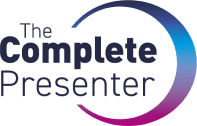Every now and then, I get asked if I can share some advanced presentation techniques with people. The problem I have with this is that the vast majority of people (I’m talking 99%) are not getting the basics right, so sharing advanced techniques would be like putting a cherry on a cow pat. Giving a good presentation is simple – do the basic things exceptionally well and you’ll be so far ahead of the field you won’t be able to see them anymore. So, what are the basics?
Know your purpose
A presentation without a purpose is like a dog without an owner – it will wander aimlessly around, and although it’s generally harmless enough, it will most definitely start to annoy some people! Be crystal clear on your purpose and everything else becomes easy.
Have a clear key message
What is the one thing you’re really trying to get across? Whatever it is, you should be able to convey it in 7 words or less, and it should be a statement, not a question. Having a clear key message and purpose will mean you should never be wasting your audience’s time.
Know your audience
Speaking of them, have you made sure your presentation is relevant to them? If you don’t already know, try to find out what makes them get out of bed in the morning / what drives them, and also, what keeps them up at night. The more you can relate your content to them personally, the more they will sit up and listen.
Choose the appropriate presentation structure
Depending on what you want to say, there is a multitude of ways of saying it. You don’t just have to use the old ‘Tell ‘em what you’re going to tell ‘em, tell ‘em, tell ‘em what you’ve told them’ structure. If your purpose is to inspire people then maybe trying something different would be worth the extra effort and practice.
Use PowerPoint appropriately
The screen is not a document so for the love of all that is Holy please don’t use it as such. Keep things very clear, with as little text as possible. Use more pictures that resonate with what you’re saying, and when you do use text avoid whole sentences like the plague (unless it’s a quote), and make it massive so that everyone will be able to read it (not just the eager beavers at the front).
Manage your nerves
There’s little point in having a great presentation if you then can’t get a single word out because you’re rooted to the spot like a bunny in the headlights. There are so many techniques to manage your nerves (many of which I’ve highlighted in previous posts), so choose a few that work for you, and then actually do them. If in doubt, deep breathing works like a charm (but it has to be the ‘shoulders relaxed, diaphragmatic breathing for it to really work).
Practise beforehand
Next to your purpose and key message, this is the step that will really pay the big dividends. Practising out loud will help you develop what you want to say (remember you don’t have to be word perfect), and allow you to play around with what works and what doesn’t. It will also massively help your nerves.
Start strongly
Even though we’re not aiming for word perfect, the first 30 seconds are vitally important, so make sure they’re well rehearsed and will make an impact.
Engage your audience
There are all kinds of ways to engage your audience, but two of the most important are making sure everything you say has direct relevance to them (hence the importance of the prep), and get plenty of eye contact. This means you can’t be reading from notes, but as you’ve practised loads you don’t need them anyway, do you?
Be clear and concise
In the history of business presentations I don’t think anyone has uttered the words “that was a great presentation, I only wish it went on longer”. Be clear, be concise, and your audience will love you for it.
Give them a clear ‘what to do now’
As you close (which should also be well rehearsed) do make sure that your audience knows what you want them to do as a result of watching your presentation. Make the next steps crystal clear so that they’re left in no doubt.
Handle questions with elegance
If there is a Q&A afterwards, remember that even if questions seem hostile, your job is to deal with them as if they’re not. Don’t take it personally, spot the central theme of what they’re asking (more about this in a future post), and then answer in a clear and succinct manner. Now is not the time to re-hash the whole presentation!
If you’re able to follow these guidelines well, and on a consistent basis, people will regard you as a seriously accomplished presenter. As always, do the simple things really well and you will be standing clear of the pack.

